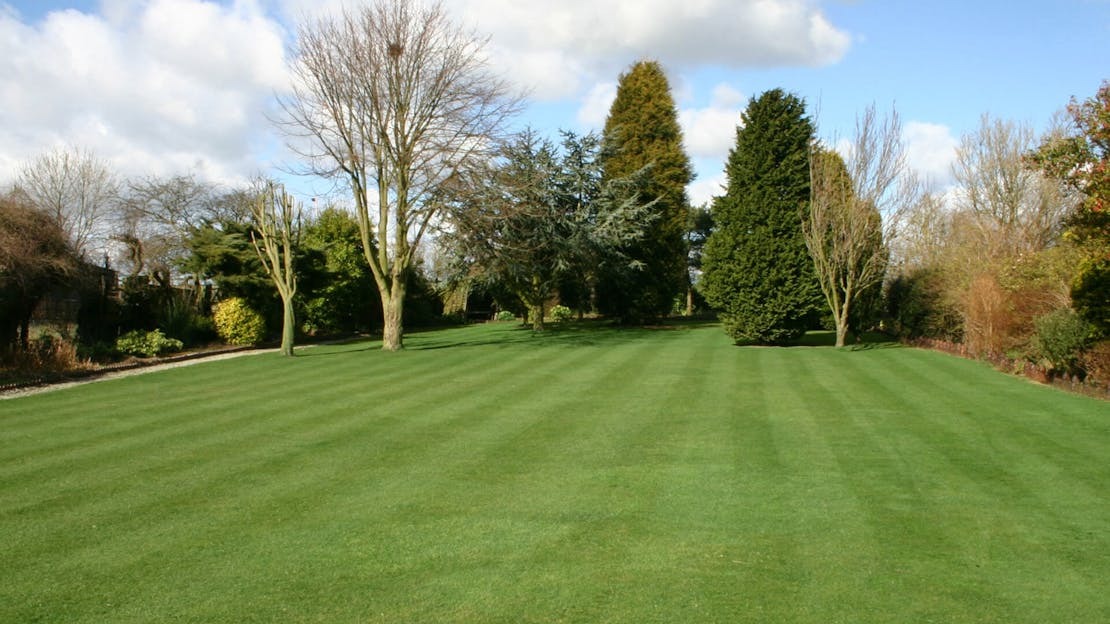
How to Kill Lawn Moss in Winter
Winter is the time of greatest threat to your lawn from moss because moss thrives in the cooler wetter weather whilst grass growth slows and can't fight back!
Winter is the time of greatest threat to your lawn from moss for two main reasons:
- Grass growth slows due to less light and warmth
- Moss is active and enjoys lower light levels and lower temperatures
This means the moss can take advantage of any weaknesses in the lawn or your lawn care program
Maintain a Good Lawn Care Program
Slow grass growth isn’t a bad thing in the right conditions. A dense healthy lawn fed and cut appropriately will be sufficiently dense so as to prevent much moss growth. Remember, moss grows primarily where the grass is weak or thin so a dense lawn is the best defence. To achieve this you need to:
- seed and repair any bare patches before winter
- feed in autumn
- if winter is mild a further feed keeps the grass healthy
- mow on a high setting to increase shading of the moss by the grass leaves
- remove autumn leaves at least weekly
Mossy Environment
Moss can and will grow anywhere, even on the roof of your house! Moss growth in the lawn during winter is helped by shade, moisture and poor air circulation. Reducing shade and improving air circulation may be possible but being aware of the potential for increased moss growth in these areas can help with your lawn care program.
Suppress Moss Growth
Moss will grow in most lawns during winter. If conditions mean moss growth in your lawn is an issue, consider suppressing the growth throughout the winter months by using a combination of ferrous sulphate products and well timed lawn care.
The Idiots Guide to Winter Moss Suppression
Step 1. Feed with Autumn Lawn Fertiliser in September or October. Keeping the grass healthy stops moss moving in
Step 2. As things cool and get wetter in October and November moss will grow rapidly so consider starting moss control by spraying Green-up Ferrous Sulphate every 4 to 8 weeks as needed
Step 3. Between late December and mid-February give the lawn a high topping with the mower and apply Winter Green High Iron Lawn Fertiliser. This will blacken the moss whilst keeping the grass healthy. Apply during a mild spell and the grass will green up beautifully. Do not apply ferrous sulphate within 4 weeks of using this.
You can apply Winter Green High Iron Lawn Fertiliser twice during the winter period, so if winters are mild where you live or you have a big moss problem consider using this around November time and again in January or February. You can still spray ferrous sulphate between applications if needed. Leave a 4 week gap between applications though.
Step 4. If you are not or don’t need to rake out the moss in spring because there is so little, then towards the end of February or early March it would be good to complete the moss control process with a final application of ferrous sulphate or better still with Moss-Off. Moss-Off has a residual effect so ideal to treat at this time of year to prevent moss developing in early spring. Alternatively, if you are going to rake out the moss and over seed this is best applied just prior to seeding to maximise protection.
Following the above program, which isn’t particularly onerous, may easily result in only small amounts of moss in spring with no raking required. I have followed this for decades and the only areas where I need to rake moss are in shady areas from a fence and the house. Otherwise, my lawn is clear, the grass is healthy and looks great all year round.
The Benefits of Ferrous Sulphate
Ferrous Sulphate also greens grass during cold conditions, protects against disease and helps suppress worm casting, so even if moss isn’t a problem, ferrous sulphate is a great product to use.
- If you want to know more then go to Lawn Moss Control and Removal
- Also watch the the videos on How to Get Rid of Moss